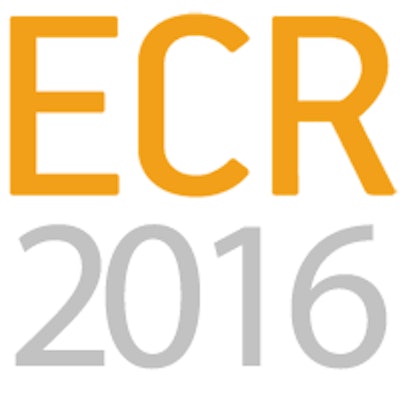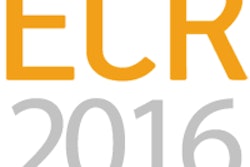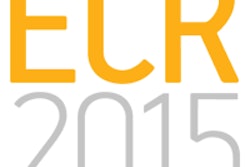
VIENNA - Dose awareness among radiology staff is key to maintaining optimal dose levels, concluded several presenters of dose monitoring studies at ECR 2016. Among them, a Swiss group found that running dose monitoring software in real-time and requiring technologists to report the results slashed the number of dose notifications due to technologist error.
The investigators from Stadtspital Triemli in Zurich studied the effects of CT dose monitoring on more than 7,000 patients referred for CT, dividing their study into two parts: 100 days with dose monitoring software installed but not accessible by staff, followed by 100 days in which staff monitored the dose results reported by the software. The rate of dose notifications, which are produced when a patient's dose exceeds defined thresholds for a protocol, fell by half when the data were monitored.
"Real-time monitoring of patient dose in CT performed with dose monitoring software indeed increases radiographers' awareness," said Dr. Christina Heilmaier in her presentation. "Such an approach supports the radiation protection endeavor, and comes along with declines in notifications due to human error."
Boosting dose awareness
The dose monitoring software produces detailed dose data following completion of a CT acquisition, and it allows providers to determine the reason for a notification. The investigators aimed to determine whether dose awareness among CT technologists changes when real-time dose monitoring software is in place, Heilmaier said.
 Dr. Christina Heilmaier from Stadtspital Triemli.
Dr. Christina Heilmaier from Stadtspital Triemli.A total of 7,024 scans were monitored, split between the two periods, yielding a total of 361 notifications. The exams were performed on two 64-detector-row CT scanners (GE Healthcare): A Discovery CT750 HD scanner was used for outpatient CT scans, and a LightSpeed VCT scanner was used for emergency CT and intensive care unit scans.
"In period 1, the dose monitoring software just ran in the background, and technologists weren't able to assess those data," she said. "In period 2, real-time monitoring of patient dose was performed."
The real-time monitoring involved a computer being placed next to the workstation to provide dose data from the software (DoseWatch, GE) at the completion of every scan. When a red checkmark showed up next to the report, technologists knew that a radiation dose alert had occurred -- something always worth investigating, Heilmaier said.
The software provides the data along with dose values for other patients undergoing the same exam protocol. Users can check the scan range to compare it to previous exams and look at size-specific dose estimates for an impression of the patient's body habitus. There is also a screen for graphics and data showing whether the patient was correctly centered in the scanner, or if there was deviation along the x- or y-axes. Finally, the technologist checks a box to select the cause of the dose notice.
Common reasons for dose notifications were as follows:
- Overweight patient (body mass index > 25)
- Miscentering
- Scan repetition due to motion artifacts
- Orthopedic hardware on scan region
- Other reason including scan on spine board
Overall, there were 361 dose notifications, for a rate of 5% among the 7,024 scans, Heilmaier said. The notifications were most frequent for the skull and brain (32%), followed by chest CT (16%) and chest and abdomen (25%).
In period 1, there were 232 notifications, representing 6.6% of all scans. These included 112 for outpatient CT (10%) and 120 for emergency CT (5%). The notification reasons for outpatient and emergency CT, respectively, included overweight patients (31%/37%, p = 0.03), miscentering (47%/43%, p < 0.001), and orthopedic hardware (14%/7%, p < 0.001).
"There was a significantly higher rate of notifications for outpatient CT compared to emergency CT," Heilmaier said. "When we compared the reasons for the dose notifications in both scanners, on the emergency CT there were significantly more notifications due to overweight, while on the outpatient CT considerably more miscentering or orthopedic hardware notifications occurred."
By period 2, the use of real-time dose monitoring had cut the rate of dose notifications to 129 (from 232 in period 1), representing 3.7% of all scans. Notifications were given for 3% of emergency CT scans and 4% of outpatient scans. There was no statistically significant difference between the scanners with regard to the reason for notification, Heilmaier said.
"When we compared period 1 to period 2, we found a considerable decline in notifications ... from 6.6% to 3.7%," she said. The rate of miscentering also dropped markedly, from 105 in period 1 to 28 in period 2. The rate of notifications for overweight patients declined in period 2, although due to the smaller total, this number increased as a percentage of all notifications.
Real-time dose monitoring software "indeed increased radiographers' dose awareness," Heilmaier said. The results contribute to lower overall doses and reduce the rate of dose notifications due to human error.
Responding to a question after the talk, Heilmaier said that between periods 1 and 2, the department held a meeting in which the group discussed the most common reasons for dose notifications.
"Then we explained the software to them so they know what to do," she said.



















